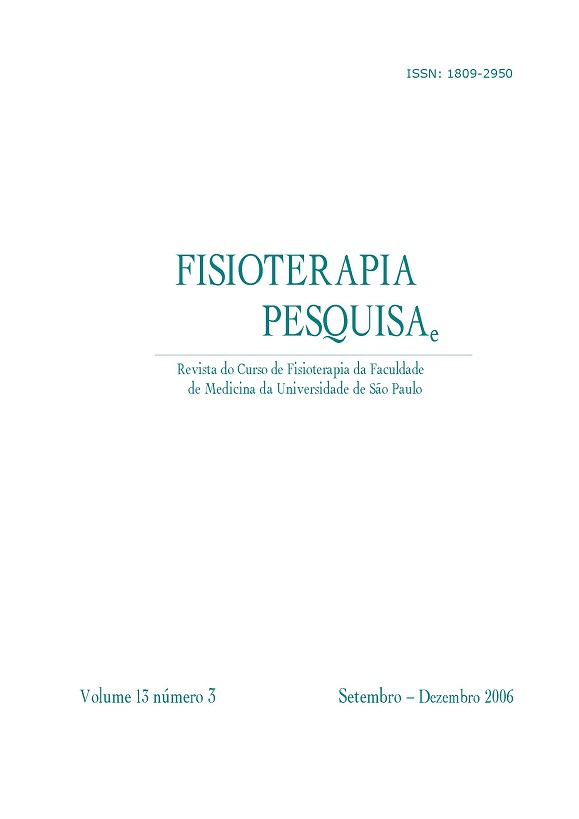Effects of a physical therapy intervention on balance and functional abilities of a patient with spinocerebellar ataxia: case report
DOI:
https://doi.org/10.1590/fpusp.v13i3.76308Keywords:
cerebellum, motor acquisitions/balance, spinocerebellar ataxias.Abstract
Spinocerebellar ataxias (SCA) form a heterogeneous group of degenerative diseases of the central nervous system, where cerebellar disorders reflect in gait ataxia, incoordination and dysarthria. Gait ataxia may occasionally lead to limb incoordination, followed by pyramidal signs and ophthalmoplegia. Knowledge of, and learning the mechanisms of motor control is essential to these patients treatment; hence the functional training, task-oriented rehabilitation approach. An SCA patient was submitted to a learning-based specific motor training in view of improving balance and functional independence in daily activities. Data (Barthel index and Berg's balance evaluation) were collected at base line and after the 16-week program, consisting of task-oriented functional training in position transference, static and dynamic balance, gait, reach and fine movements. Results showed increase in balance (37.8%) and inthe Barthel index (35%). Motor control gains were transferred to daily activities, thus showing the proposed training is a valid therapeutic option in the treatment of SCA.
Downloads
Download data is not yet available.
Downloads
Published
2006-12-31
Issue
Section
Case Reports
How to Cite
Effects of a physical therapy intervention on balance and functional abilities of a patient with spinocerebellar ataxia: case report. (2006). Fisioterapia E Pesquisa, 13(3), 53-59. https://doi.org/10.1590/fpusp.v13i3.76308



